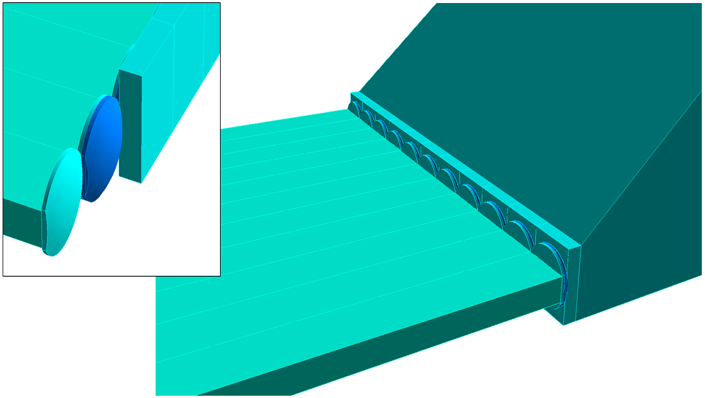Difference between revisions of "High-Performance Detection of Internally Reflected Cherenkov Light (DIRC)"
| Line 1: | Line 1: | ||
'''High-Performance DIRC''' | '''High-Performance DIRC''' | ||
| − | + | The EIC DIRC design is inspired by the design of the PANDA Barrel DIRC detector and many synergies exist in the R&D processes of both projects. The primary goal of developing a high-performance DIRC is to have a compact device that can satisfy the PID requirements of the EIC. | |
| − | [[File: | + | [[File:DIRC1.png]] |
| + | |||
| + | The baseline design, implemented in a Geant4 simulation, is shown above. The radiators are synthetic fused silica bars, each 4200 mm long, with a cross-section of 17 mm × 35.4 mm divided into 16 modules, called bar boxes. In each box eleven bars are placed side-by-side and separated by a small air gap. The 16 bar boxes are arranged in a barrel with a radius of 1m around the beam line. Mirrors are attached to one end of each bar. On the readout end, where photons exit the bar, a special 3-layer lens, that will be described further, is attached to each bar. The other side of the 3-layer lens is coupled directly to a prism that serves as an expansion volume. A zoom into the readout end of the bar box, showing details of the lens and prism section is shown on a right side of Fig. 4. The prism is made of fused silica, has a 38 degrees opening angle, and has dimensions of 284.3 mm × 390 mm × 300 mm. The detector plane of each prism is covered by 27,690 2 mm × 2 mm pixels giving a total of about 443,040 channels to record the location and arrival time of the Cherenkov photons. | ||
| + | |||
| + | The focus on the 3-layer lens is shown below: | ||
| + | |||
| + | [[File:DIRC1.png]] | ||
| + | |||
| + | [https://userweb.jlab.org/~sallison/analysis/newfits.php link study1] | ||
Revision as of 22:40, 25 January 2017
High-Performance DIRC
The EIC DIRC design is inspired by the design of the PANDA Barrel DIRC detector and many synergies exist in the R&D processes of both projects. The primary goal of developing a high-performance DIRC is to have a compact device that can satisfy the PID requirements of the EIC.
The baseline design, implemented in a Geant4 simulation, is shown above. The radiators are synthetic fused silica bars, each 4200 mm long, with a cross-section of 17 mm × 35.4 mm divided into 16 modules, called bar boxes. In each box eleven bars are placed side-by-side and separated by a small air gap. The 16 bar boxes are arranged in a barrel with a radius of 1m around the beam line. Mirrors are attached to one end of each bar. On the readout end, where photons exit the bar, a special 3-layer lens, that will be described further, is attached to each bar. The other side of the 3-layer lens is coupled directly to a prism that serves as an expansion volume. A zoom into the readout end of the bar box, showing details of the lens and prism section is shown on a right side of Fig. 4. The prism is made of fused silica, has a 38 degrees opening angle, and has dimensions of 284.3 mm × 390 mm × 300 mm. The detector plane of each prism is covered by 27,690 2 mm × 2 mm pixels giving a total of about 443,040 channels to record the location and arrival time of the Cherenkov photons.
The focus on the 3-layer lens is shown below:
